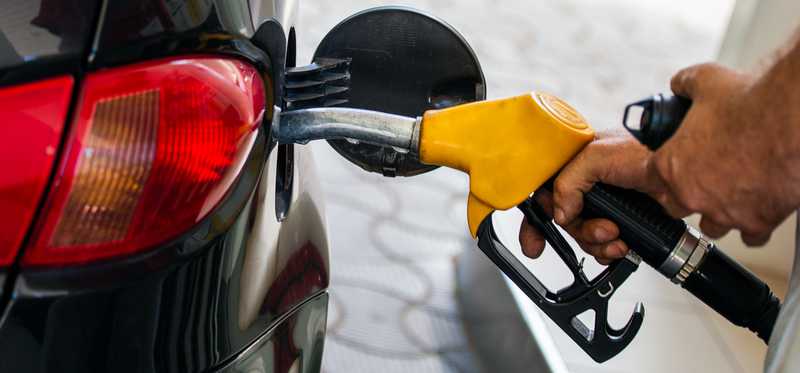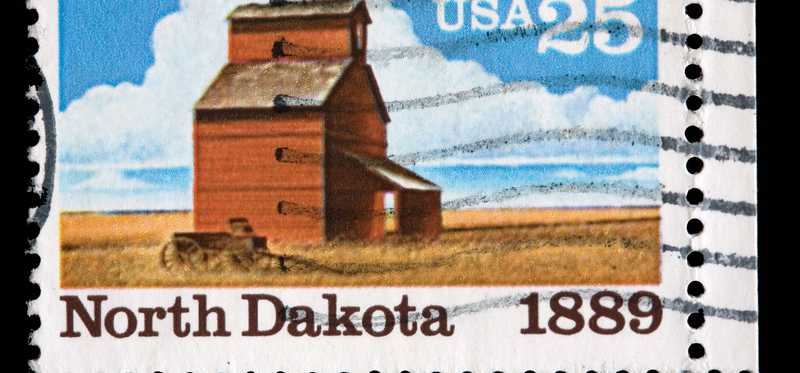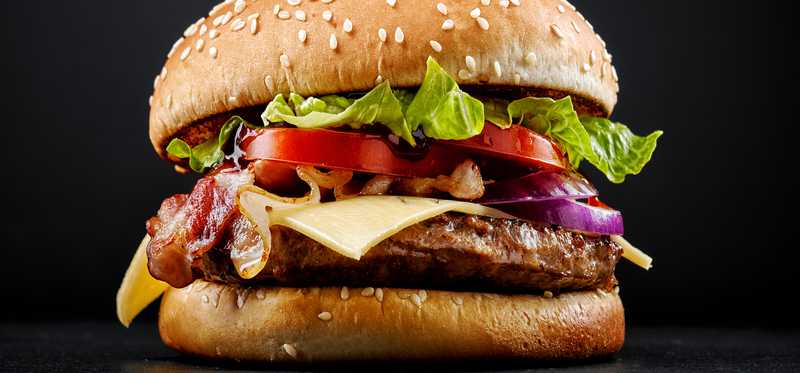Here's What These 15 Everyday Items Cost 30 Years Ago

Here's What These 15 Everyday Items Cost 30 Years Ago
A silent budget killer
Until recently, many of us gave little thought to inflation. It has averaged annual gains of about 3% over long periods, and even less in many years. Recently, though, it has topped 8%. It's a mistake to ignore inflation because it can wreak havoc on your finances over long periods -- and can leave you with less purchasing power in retirement than you thought you'd have. Imagine that 3% average annual inflation rate: It can make something that costs $100 today cost about $243 in 30 years. Yikes, right?
To help you see inflation in action -- and how growth rates can vary for various expenses -- here are 15 everyday expenses and what they cost 30 years ago, in 1992.
5 Stocks Under $49
Presented by Motley Fool Stock Advisor
We hear it over and over from investors, “I wish I had bought Amazon or Netflix when they were first recommended by The Motley Fool. I’d be sitting on a gold mine!" It's true, but we think these 5 other stocks are screaming buys. And you can buy them now for less than $49 a share! Click here to learn how you can grab a copy of “5 Growth Stocks Under $49” for FREE for a limited time only.
Previous
Next

1. Coffee
Coffee is something many of us think we can't live without. According to data from the U.S. Bureau of Labor Statistics, a pound of ground roast coffee averaged $2.58 in 1992. More recently, it has cost $6.11. Over 30 years, that's an average annual gain of about 2.9%, close to inflation's average rate. With many Americans tightening their belts these days, there are ways to spend less on coffee without having to give it up or drink less. For one thing, aim to make most of your coffee at home instead of frequently buying cups while out and about. When buying coffee to make at home, try less expensive brands to see if you can find one you like a lot.
Previous
Next

2. Hard drive memory
Not all prices rise over time. The memory chips in your computer, for example, have greatly expanded in capacity over the years while falling in price. In 1992, a gigabyte (GB) worth of memory cost around $74,678, per HumanProgress.org. In 2015, that figure fell to $4.94. Today, few people would settle for a 1 GB hard drive -- a 1 terabyte (TB) drive might seem insufficient, and 1 TB is equal to about 1,000 or 1,024 GB, depending on the measuring standard you use. On Amazon.com, you can buy 1 TB flash drives for $20 or $30 or less.
Previous
Next

3. A college education
While the prices of some things, like computer memory chips, fall over time, prices in general tend to rise -- and some rise a lot. One of the best examples of this is college tuition, which has risen at a much higher rate than overall inflation. According to data from the U.S. Bureau of Labor Statistics, the cost of college tuition and fees, on average, is about 320% higher in 2022 than in 1992 -- that's an average annual growth rate of 4.9%. According to CNBC, private college tuition, fees, and room and board cost $26,960 for the 1992-1993 school year. (Public college in-state rates are much lower, of course.) For the 2022-2023 year, the corresponding figure is nearly $55,000. If that sum is 320% higher in another 30 years, the private college cost will approach $230,000 -- for a single year of school!
Previous
Next

4. Bread
Bread is a very common expense that many of us face each week, if not more often. Back in 1992, a pound of white bread cost, on average, about $0.75 -- which in today's dollars would be $1.39. Thirty years later, the actual cost of a pound of bread was recently $1.72. That increase from $0.75 to $1.72 is 129%, or an average annual gain of 2.8%.
ALSO READ: How I Bonds Can Protect Your Portfolio From Inflation
Previous
Next

5. Gas
The price of gas tends to go both up and down frequently, and it has recently gone up a lot, before starting to retreat. Back in 1992, a gallon of gas cost around $1.13 -- which in today's dollars would be around $2.34. Meanwhile, a gallon of gas recently did cost a national average price of $4.90, far more. That's in large part due to the war in Ukraine.
5 Stocks Under $49
Presented by Motley Fool Stock Advisor
We hear it over and over from investors, “I wish I had bought Amazon or Netflix when they were first recommended by The Motley Fool. I’d be sitting on a gold mine!" It's true, but we think these 5 other stocks are screaming buys. And you can buy them now for less than $49 a share! Click here to learn how you can grab a copy of “5 Growth Stocks Under $49” for FREE for a limited time only.
Previous
Next

6. Magazines
You may not have noticed it, but even the prices of magazines increase over time. For example, a search on eBay for older Rolling Stone, Fortune, and Sports Illustrated magazines turned up prices per issue of $2.50, $3.95, and $2.95, respectively. Today, those respective costs are $9.99, $12.99, and $6.99. Those are increases of 300%, 229%, and 137% -- on an annualized basis, 4.7%, 4.0%, and 2.9%.
ALSO READ: Seniors: Here's How Inflation Could Affect Social Security in 2023
Previous
Next

7. Rent
Here's a big-ticket expense for just about all of us: housing. Many of us have bought homes and make monthly mortgage payments, and many of us are renting our homes. According to U.S. census data, the median rent in 1992 was $411 per month. In 2022, it was $1,314 -- up 220%, or on an annualized basis, nearly 4%.
Previous
Next

8. A first-class stamp
It's tricky to talk about the price of postage these days. Forever stamps were introduced back in 2007, and every first-class stamp (except some in coils) became a Forever stamp in 2011. When every stamp you buy doesn't have a price on it, you aren't necessarily aware when the price goes up, as it does every now and then. Back in 1992, a first-class stamp cost $0.29. Today, the cost is $0.60 -- an increase of 107%. That's equal to an average annual increase of 2.45% -- well below the long-term annual average rate of inflation of around 3.2%.
Previous
Next

9. Movie tickets
Going to the movies has changed in the past few years. With the onset of the COVID-19 pandemic, people stopped going out to the movies, and now many have resumed doing so. The ability to stream most movies now, though, has also given people a way to see movies without going to theaters. Meanwhile, the cost of movie tickets has, of course, gone up. In 1992, a movie ticket cost about $4.15, on average. Today, the average price nationally is $9.17 -- a 121% increase, which annualizes to nearly 2.7%.
ALSO READ: 3 Stocks to Buy With Inflation Potentially Peaking
Previous
Next

10. A six-pack of beer
If you have enjoyed an occasional beer for many decades, it would have cost you, on average, $5.78 for a six-pack in 1992. Today, Budweiser six-packs cost between around $7 and $9. That's not a huge overall increase over 30 years, but increases have not been smooth -- according to USA Today, the cost of beer jumped around 4.5% just between last summer and this summer.
5 Stocks Under $49
Presented by Motley Fool Stock Advisor
We hear it over and over from investors, “I wish I had bought Amazon or Netflix when they were first recommended by The Motley Fool. I’d be sitting on a gold mine!" It's true, but we think these 5 other stocks are screaming buys. And you can buy them now for less than $49 a share! Click here to learn how you can grab a copy of “5 Growth Stocks Under $49” for FREE for a limited time only.
Previous
Next

11. A wedding
Wedding costs tend to be surprisingly high, but also surprising is the fact that wedding costs receded not long ago, in 2020. They're back to rising, though, and recently were expected to average about $27,000 in 2022. (Note that since some weddings are super extravagant and costly, median wedding costs will tend to be lower than average costs.) Back in the early 1990s, though, after another decline, the cost of the average wedding was close to $16,000.
Previous
Next

12. A house
Let's return to housing. Most of those who don't rent are homeowners, with mortgage payments. The median home sales price back in 1992 was around $120,000 -- and recently, that number has hit $440,300 -- a whopping increase of 269%, or about 4.4% annually over those 30 years. This is a good reminder that while some homes in some areas will surge in value over certain years, in general, a home is not going to be a big moneymaker for you. It's a fine place to live, but you're more likely to make money faster in the stock market.
Previous
Next

13. Ice cream
If you craved some ice cream back in 1992, you'd have paid an average of about $2.58 for it, per data from the Federal Reserve Bank. Fast-forward 30 years, to 2022, and you'll be paying around $5.62, on average. That's just an average, though, meaning that there are certainly some tubs of ice cream that will cost you a lot more, and that you can certainly find many tubs on sale for far less.
Previous
Next

14. Ground beef and chicken
Hamburger lovers in 1992 would have paid around $1.55 per pound for ground beef, while burger aficionados in 2022 have to pay an average of about $4.89 per pound -- an increase of 215%. On an annual basis, that's growth of around 3.9% each year, for 30 years. Fresh, whole chicken was about $0.85 per pound in 1992, meanwhile -- and today it's close to $1.88, an increase of 121%.
ALSO READ: Inflation Hits a 40-Year High. Here's Where to Invest Your Money Now.
Previous
Next

15. Electricity
While we can live without many things, it would be very hard to live without electricity these days. That means we're likely to pay whatever it costs -- though there can be ways to keep costs down, such as by investing in solar power. The average cost of electricity per kilowatt-hour in U.S. cities was $0.092 back in the middle of 1992, per the St. Louis Fed, and as of the middle of 2022, it's up to $0.166. That's an increase of just 80%, or only about 2% annually over 30 years.
5 Stocks Under $49
Presented by Motley Fool Stock Advisor
We hear it over and over from investors, “I wish I had bought Amazon or Netflix when they were first recommended by The Motley Fool. I’d be sitting on a gold mine!" It's true, but we think these 5 other stocks are screaming buys. And you can buy them now for less than $49 a share! Click here to learn how you can grab a copy of “5 Growth Stocks Under $49” for FREE for a limited time only.
Previous
Next

Keep inflation in mind
As you go about your financial life, keep inflation in mind and consider increasing the amount of money you need to retire with accordingly. If you think that you could retire today with a million dollars and be happy, but retirement is 30 years away, you might want to aim for $2.5 million instead, assuming an overall average inflation rate of 3.2%. To play it even safer, aim for more. One silver lining for your retirement planning is that your Social Security benefit checks will automatically receive cost-of-living increases, to account for inflation.
John Mackey, CEO of Whole Foods Market, an Amazon subsidiary, is a member of The Motley Fool’s board of directors. Selena Maranjian has positions in Amazon. The Motley Fool has positions in and recommends Amazon. The Motley Fool recommends eBay and recommends the following options: short October 2022 $50 calls on eBay. The Motley Fool has a disclosure policy.
Previous
Next
Invest Smarter with The Motley Fool
Join Over Half a Million Premium Members Receiving…
- New Stock Picks Each Month
- Detailed Analysis of Companies
- Model Portfolios
- Live Streaming During Market Hours
- And Much More
READ MORE
HOW THE MOTLEY FOOL CAN HELP YOU
-
Premium Investing Guidance
Market beating stocks from our award-winning service
-
The Daily Upside Newsletter
Investment news and high-quality insights delivered straight to your inbox
-
Get Started Investing
You can do it. Successful investing in just a few steps
-
Win at Retirement
Secrets and strategies for the post-work life you want.
-
Find a Broker
Find the right brokerage account for you.
-
Listen to our Podcasts
Hear our experts take on stocks, the market, and how to invest.
Premium Investing Services
Invest better with The Motley Fool. Get stock recommendations, portfolio guidance, and more from The Motley Fool's premium services.